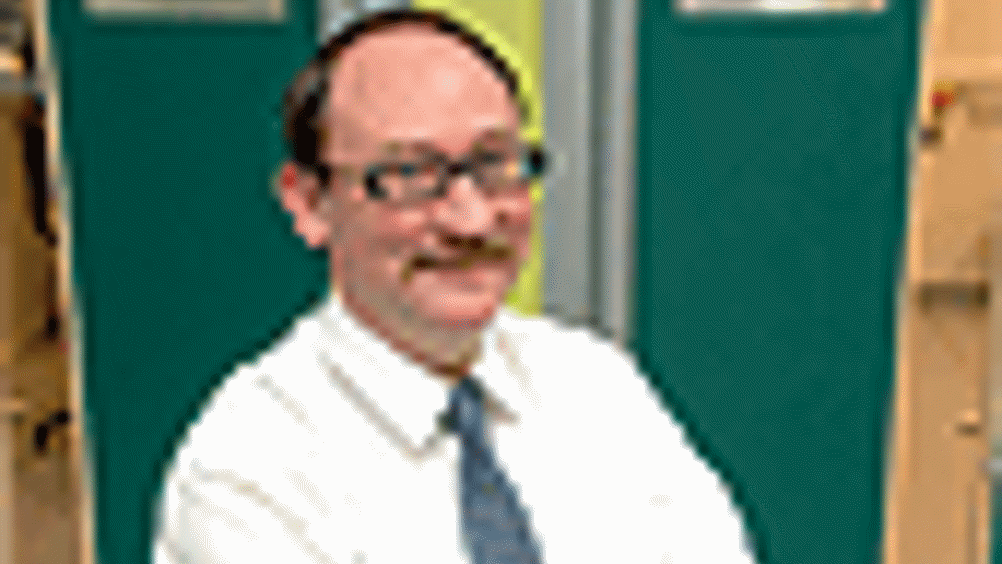Hugh Gill, Touch Bionics’ director of technology and operations
Hugh Gill, Touch Bionics’ director of technology and operations, aims to take the award-winning i-Limb prosthetic hand to the next stage. Stuart Nathan reports.

It is often said that engineers take ideas from nature and turn them into technology. However, copying nature is one of the hardest tasks an engineer can face. Making replacement body parts such as implants and prostheses is difficult as the anatomical processes are often poorly understood.
So building a prosthetic hand is a real achievement, which is why the i-Limb Hand, launched last year by Scottish company Touch Bionics, has made such a stir, winning the MacRobert Award, the Royal Academy of Engineering’s highest award for innovation.
The company claims it is the world’s first commercially available fully-articulated hand.
Hugh Gill, Touch Bionics’ director of technology and operations, in charge of developing it into the next generation, says the product has a great deal of potential.
‘When I joined the company 15 months ago, the product was just at the end of the prototyping stage,’ he said. ‘Over the past 12 months, I’ve changed the design significantly.’
Gill’s background is in product design and manufacturing. After 11 years developing products and setting up manufacturing lines for Polaroid, he founded his own consultancy, called WideBlue, which specialised in taking high-tech products from concept to manufacturing. ‘I worked to support about 30 companies, quite a few of which were in the biomedical engineering sector.’
Joining Touch Bionics, Gill realised that the i-Limb Hand was too realistic for its own good. Users were treating it as though it was flesh and blood rather than machinery, and that sometimes took it beyond its capabilities.
‘People were climbing ropes with it; someone got a finger caught in a mesh and ripped it off. Someone else came off his motorbike — he survived, the hand didn’t. People were lifting heavy settees with it, dropping them and crushing the hand. People were trying to fire bows and arrows; even trying to do handstands. So I’ve been putting lots of changes in to make it more robust.’
The i-Limb Hand is a chassis for the five digits, which contain their own batteries and motors. ‘There’s no electrical hard-wiring in there,’ said Gill. ‘It’s all done with direct-contact cotter pins, which are spring-loaded. You can just screw in a new digit and it engages with the electrical contacts and away you go.’
So making the hand stronger and more durable is not just a matter of more powerful motors. ‘One of the problems is that there’s a tendon inside each of the digits, which has to handle huge forces. I’ve been researching many different technologies and materials to come up with something that would be very strong but when it got to a certain force level there would be a certain percentage stress in it. But that’s just one of many challenges.’
Gill stressed that the machinery and electronics of the hand is not the only challenge: the covering of the prosthetic, known as a cosmesis, is just as hard.
There are two types of cosmesis, he explained, a ‘robotic’ one, which is mostly transparent and shows off the technology of the hand; and a human-form one, which is opaque, skin-toned, and makes the hand look as natural as possible.
‘These have to function well without losing any power in the hand, and they have to be durable,’ said Gill. ‘When the hand closes, the elastic stiffness of the cosmesis is a factor in how much power is transmitted by its motors.’
For the robotic hand, for example, the cosmesis contains a liner that reduces friction between the machinery and the injection-moulded ‘glove’. ‘There are lots of features to make sure it grips where it should grip and slips where it should slip,’ he said.
Although it is a medical device, Gill’s work does not bring him into contact with many medics.
‘The product is non-invasive; you don’t need any surgery done,’ he explained. ‘It operates through myoelectric sensors, which are in contact in the skin of the remaining limb and pick up the microvolt signals from the muscles just beneath. So the folks I work with are occupational therapists and prosthetists; I don’t need to work directly with surgeons.’
Register now to continue reading
Thanks for visiting The Engineer. You’ve now reached your monthly limit of premium content. Register for free to unlock unlimited access to all of our premium content, as well as the latest technology news, industry opinion and special reports.
Benefits of registering
-
In-depth insights and coverage of key emerging trends
-
Unrestricted access to special reports throughout the year
-
Daily technology news delivered straight to your inbox










Water Sector Talent Exodus Could Cripple The Sector
Maybe if things are essential for the running of a country and we want to pay a fair price we should be running these utilities on a not for profit...